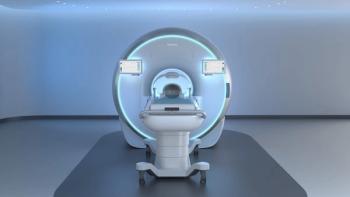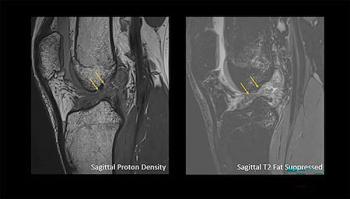
Postablation syndrome hits RFA patients
A significant number of patients undergoing radiofrequency ablation of liver tumors develop symptoms resembling the flu, according to a study in the July issue of the American Journal of Roentgenology.
A significant number of patients undergoing radiofrequency ablation of liver tumors develop symptoms resembling the flu, according to a study in the July issue of the American Journal of Roentgenology.
Patients in this population could be affected by fever, delayed pain, malaise, chills, and nausea after the procedure, even if only briefly. Clinical reports sporadically mention these symptoms, which have not been scrutinized in detail until now, according to investigators.
Dr. Gerald Dodd and colleagues from the radiology department of the University of Texas Health Science Center at San Antonio prospectively reviewed delayed symptoms in 39 patients with 89 liver tumor nodules who underwent 50 consecutive RFA sessions. They found that about one-third of patients developed flulike symptoms directly related to the volume of ablated tissue.
All patients had a physical exam before the procedure plus pre- and post-RFA blood and liver function tests. Thirty-six percent of patients developed the symptoms after the procedure. Symptoms usually appeared three days after the RFA procedure and lasted for five days.
The researchers also found statistically significant predictors for these symptoms:
- tumor volumes larger than 50 cubic cm
- ablated tissue volumes larger than 150 cubic cm
- difference between actual tumor volume and volume of tissue ablated larger than 125 cubic cm
- difference between actual tumor volume and volume of tissue ablated larger than 125 cubic cm
- post-RFA aspartate aminotransferase (AST) levels above 350 IU/L
The investigators noted several clinically useful thresholds. Patients undergoing RFA for a single lesion smaller than 3.25 cm or patients with postablation AST levels below 150 IU/L are unlikely to develop the syndrome. Patients undergoing RFA for tumors larger than 7.75 cm in diameter have a higher likelihood.
The clinical literature refers to these symptoms, although only sparsely. The most common side effects mentioned are transient elevation of liver transaminases, post-RFA fever, and persistent pain. Only one study had previously characterized them as a potentially RFA-related syndrome resolved within two weeks with conservative treatment (Iannitti et al. Arch Surg 2002;137:422-426).
Fever is the most clinically relevant and concerning symptom, as it may indicate sepsis, although none of the patients in the study developed infection. Only one of 16 patients who became febrile received antibiotics, but all showed negative blood samples. Awareness of the conditions characterizing the syndrome should facilitate the appropriate patient management, the researchers said.
For more information from the Diagnostic Imaging archives:
Newsletter
Stay at the forefront of radiology with the Diagnostic Imaging newsletter, delivering the latest news, clinical insights, and imaging advancements for today’s radiologists.




























